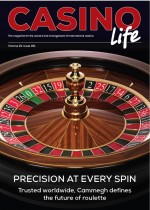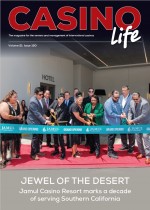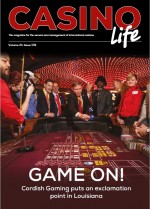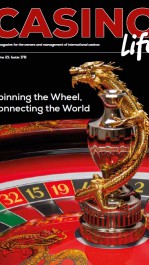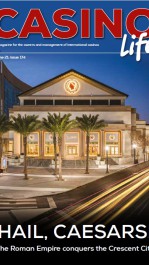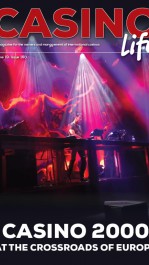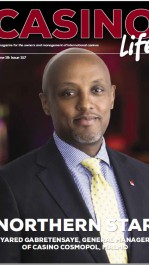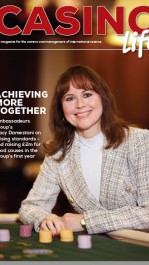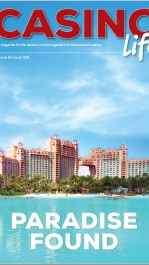A delicate balance between revenue and entertainment. Interview with Marcus Prater,Executive Director of the AGEM. Jack Bulavsky
 Marcus Prater is Executive Director of the Association of Gaming Equipment Manufacturers (AGEM), a non-profit international trade association representing manufacturers and suppliers of electronic gaming devices, systems, table games, online technology, key components and support products and services for the gaming industry. Its current membership of 147 companies in 21 countries is a who’s who of the supplier segment of the global gaming industry.
Marcus Prater is Executive Director of the Association of Gaming Equipment Manufacturers (AGEM), a non-profit international trade association representing manufacturers and suppliers of electronic gaming devices, systems, table games, online technology, key components and support products and services for the gaming industry. Its current membership of 147 companies in 21 countries is a who’s who of the supplier segment of the global gaming industry.
Jack Bulavsky, Special Assignment Correspondent for Casino Life in Las Vegas, spoke with Prater several weeks before the opening of G2E 2015.
About two months ago, AGEM issued acomprehensive report titled “Building Better Business – Assessing the Impact of Hold Percentages on Overall Slot Revenue.” The report reviewed the impact of tightening hold percentages in key gaming states across the United States. Why did you commission this report?
Senior leaders of our membership asked AGEM to spend energy on trying improve the overall business environment due to the fact that slot revenues are flat and declining. Part of this is because slot holds have been tightened and players are not having an enjoyable gaming experience and reacting to it with less slot play. Therefore, over time, AGEM wants to begin a dialog on this topic and show operators that there is more money to be made by possibly returning tightened percentages back to players. The report is titled “Building Better Business” because that’s what we want for everyone involved. And it’s not just the hold percentages we’re looking at to improve business. We’re also having dialog on skill-based slot games. This is all about an improved business environment as we move forward and look to the future.
Let me give you an example that illustrates what I’m saying. In one section of the report specific to Nevada, it stated that gamblers are clearly not playing slot machines as much they did in the past. Slot machine wagering of $105.4 billion in 2014 was down 23 percent from the all-time high of $138 billion in 2006. There are many factors for this, but one is the impact of tightened hold percentages set by operators.
What feedback have you received since the report was released?
Several AGEM members have heard from operators who agree and say we need to protect the positive player experience. The idea of the report was to elevate the conversation which actually started some years ago with the success of penny slots. That’s when tighter holds on those specific games prevented players from getting to bonus rounds and missing out on the true entertainment of the game.
Again, let me quote the report and this one from Daniel Mitchell, ClubsNSW Senior Policy Officer, Gambling, who said from Australia that “reducing the return to players on gaming machines isn’t a guaranteed way to increase player expenditure. In fact, in most instances it will invoke the opposite response where players will spend less and revenues will decline. An analysis of clubs across New South Wales reveals that on a per machine basis, those clubs with the lowest return to player rates and highest venue hold percentages generate the least revenue.”
Do tighter hold percentages concern European operators and other venues outside of the U.S. as well?
Yes. This conversation is not exclusive to the United States by any means. It’s a conversation that needs to be held wherever there are slot machines. In the U.S., we’re aware of hold percentages from state agencies, but that same information isn’t always available from international markets. Publicly-traded casinos in the U.S. provide quarterly gaming reports and these reports are a good barometer of business, especially regional operators such as Isle of Capri, Pinnacle and Penn National. They have been slow to recover since the recession in 2008 but now those regional casino performance numbers have been improving.
How would you like to see operators react to the report?
It would be positive if the report sparked some of the operators to experiment with their own gaming floor. For instance, casinos with 2,000 total machines may feature some 500-coin penny games set with a hold in the low 80s. Perhaps those machines should be looked at and studied with different hold percentages. It’s understood that there is a delicate balance between giving players a fair entertainment value while maximizing revenues for casino operators. But it’s also important to note that the industry needs to consider all new ideas to stop the erosion of slot revenues in markets throughout the U.S. and elsewhere.
I would encourage Casino Life readers who want more detail about this to go to www.agem.org where we have posted the Applied Analysis Report and AGEM Marketing Report. The statistical documentation highlights examples where operators have loosened slots and where those players became winners. Then, over time, those players kept returning and the operator benefited


